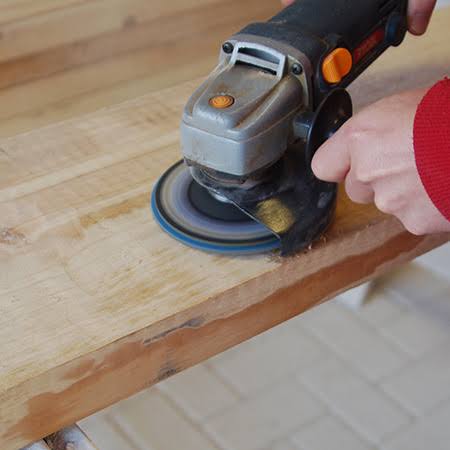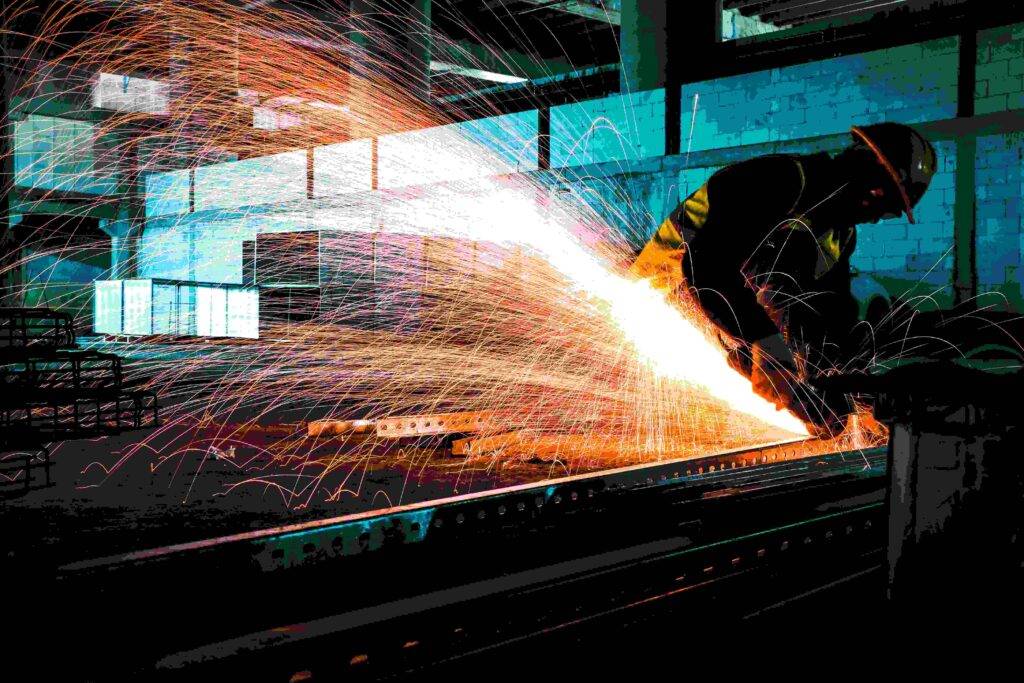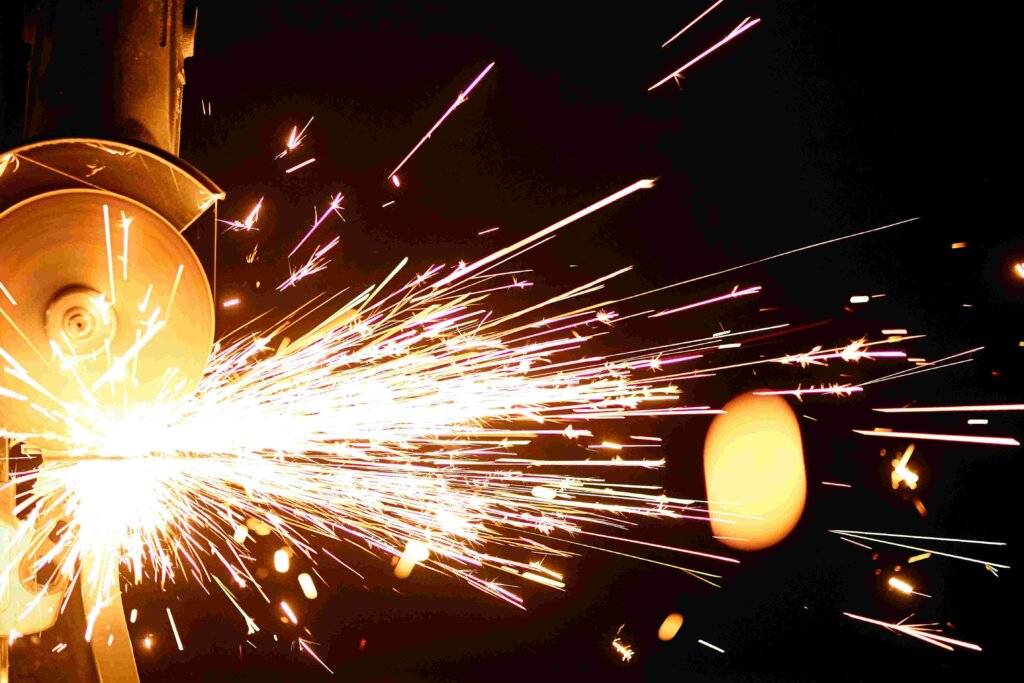When it comes to sanding, most people tend to think of traditional hand-held sanders, but using an angle grinder for sanding is quickly gaining popularity in various industries. An angle grinder is a versatile tool, known mainly for cutting, grinding, and polishing, but with the right attachments, it becomes a powerful machine for sanding tasks as well. This article explores why an angle grinder is an excellent choice for sanding, how to use it effectively, and the best practices to follow to ensure the best results. Whether you’re a DIY enthusiast, professional carpenter, or metalworker, learning how to use an angle grinder for sanding can save you time and money.
Why Use an Angle Grinder for Sanding?
An angle grinder’s powerful motor and high-speed operation make it suitable for heavy-duty sanding jobs. Compared to traditional sanders, it can handle larger areas quickly, making it ideal for professional work that requires high productivity. This tool is also widely used for removing rust, smoothing out metal surfaces, and even sanding wood. Its versatility allows users to switch between cutting, grinding, and sanding by simply changing the disc or attachment. With angle grinders available in different sizes and speeds, they offer flexibility in terms of the types of sanding jobs they can perform, ranging from rough surface preparation to fine finishing.
The high-speed rotation of an angle grinder makes it more effective at removing material than most traditional sanders. If you’re working with metal or concrete, an angle grinder can make quick work of tough surfaces, providing a smooth finish in a fraction of the time it would take with a manual sander. Woodworkers also find angle grinders useful for rough shaping and sanding of wood, particularly when working with large pieces. The power and speed of the tool allow for faster material removal, making it a popular choice for jobs like furniture construction and large-scale renovations.
Types of Sanding Attachments for Angle Grinders
Choosing the right sanding attachment is crucial for getting the desired results when using an angle grinder for sanding. One of the most common attachments for sanding is the flap disc, which consists of overlapping layers of abrasive material. Flap discs come in various grit sizes, allowing you to adjust the coarseness depending on the job. Coarser grits are used for removing material quickly, while finer grits are ideal for finishing work.
Another popular attachment is the sanding disc, which attaches directly to the grinder’s backing pad. These discs come in different grit levels and are ideal for flat surfaces or more precise sanding tasks. For those working with wood, a carbide abrasive disc is often used to remove rough edges and shape the wood. This type of disc can handle tough material while still providing a relatively smooth finish.
Wire brush attachments are also frequently used with angle grinders, particularly when removing rust or paint from metal surfaces. Although not technically sanding, wire brushes prepare surfaces for sanding by stripping away old layers of material. These attachments make the grinder a versatile tool for preparing surfaces before painting, polishing, or further sanding.
How to Use an Angle Grinder for Sanding Safely
While using an angle grinder for sanding offers many advantages, it’s essential to use it safely. The high-speed operation of the grinder poses some risks if not handled correctly. Always wear personal protective equipment (PPE), including safety goggles, gloves, and ear protection, to avoid injury from flying debris or loud noise.
When sanding with an angle grinder, start by selecting the appropriate disc for the material you’re working on. Make sure the disc is securely fastened to the grinder before turning it on. It’s also important to check the speed settings of the grinder, as some materials may require lower speeds to prevent overheating or excessive wear on the sanding disc.
Keep a firm grip on the angle grinder and apply light pressure to the surface you’re working on. Let the tool do the work rather than forcing it, as this can damage both the tool and the material. Always work in smooth, even strokes to achieve a consistent finish. It’s important to note that angle grinders generate a lot of dust when sanding, so using a dust extraction system or working in a well-ventilated area can help maintain a clean workspace and protect your health.
Best Practices for Achieving a Smooth Finish with an Angle Grinder
To get the best results when using an angle grinder for sanding, follow these best practices. First, always start with a coarse grit disc to remove the bulk of the material. Gradually switch to finer grit discs as you approach the final stages of sanding. This method ensures that you’re efficiently removing material while still achieving a smooth finish.
Another tip is to work in sections, especially when dealing with large surfaces. Trying to sand an entire area at once can lead to uneven results. Break the job down into smaller sections, and work methodically across the surface to ensure a uniform finish. It’s also important to check the condition of your sanding discs regularly. Worn-out discs can lead to poor sanding performance, so replace them as needed to maintain the quality of your work.
For woodworking projects, using an angle grinder for sanding can significantly speed up the process, but it’s essential to be cautious when working with softer woods. Applying too much pressure or using a disc with too coarse a grit can lead to gouging or damaging the wood. Always test the grinder on a scrap piece of wood before working on the final project to ensure you’re using the right grit and pressure.
Maintenance and Care of Your Angle Grinder
To ensure the longevity of your angle grinder, regular maintenance is key. After each use, clean the tool thoroughly to remove dust and debris. This helps prevent the build-up of material, which can affect the grinder’s performance over time. Inspect the grinder for any signs of wear or damage, especially around the motor and the power cord. If you notice any issues, have them repaired before using the tool again to avoid accidents.
Storing the angle grinder in a dry, cool place will help prevent rust and extend the life of the tool. Additionally, check the condition of your sanding discs and other attachments regularly. Keeping these accessories in good condition is essential for maintaining the efficiency of the tool and ensuring that you’re always getting the best results.
Conclusion
Using an angle grinder for sanding is a powerful and effective method for a wide range of projects. Whether you’re working with wood, metal, or concrete, this tool offers versatility and speed that traditional sanders can’t match. With the right attachments and proper technique, an angle grinder can help you achieve professional-level results in a fraction of the time. Remember to prioritize safety, follow best practices, and maintain your tool to ensure long-lasting performance.



